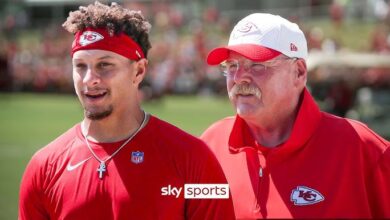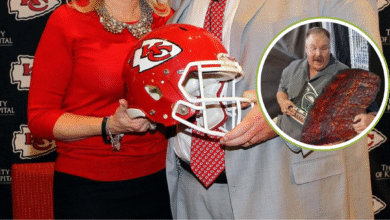Tom Brady’s Hidden Crisis: How He Shattered Doubts to Forge an NFL Legend
OPINION: This article may contain commentary which reflects the author's opinion.
In the fall of 1997, Tom Brady was a nobody at the University of Michigan. A lanky, slow-footed quarterback from San Mateo, California, he was buried at the bottom of the depth chart—seventh string, barely a blip on the Wolverines’ radar. Coaches barely glanced at him. Teammates didn’t bother learning his name. At 20, Brady was drowning in self-doubt, convinced he’d never live up to the dreams he’d scribbled in his high school notebook: play in the NFL, win a Super Bowl, be the best. One rainy night, alone in his dorm, he hit rock bottom. He grabbed a pen and wrote a letter to his parents, Tom Sr. and Galynn. “I’m not good enough,” he confessed. “Maybe this isn’t for me.”
That letter was Brady’s crisis point. He’d grown up idolizing Joe Montana, throwing spirals in his backyard, but college football was a different beast. Michigan’s coach, Lloyd Carr, favored blue-chip recruits, not unheralded kids like Brady. Practices were brutal—Brady was a tackling dummy, sent in to absorb hits during scout team drills. He fumbled snaps, threw wobbly passes, and watched prized freshman Drew Henson get all the hype. The thought of quitting gnawed at him. Why keep fighting for a spot he’d never earn?
But Brady didn’t mail that letter. Instead, he tore it up. Something clicked—doubt was the enemy, not the truth. He started waking at 5 a.m., running sprints alone on the practice field. He pored over film, studying defenses until his eyes burned. He begged for extra reps, even when coaches rolled their eyes. Slowly, he improved. By 1998, he’d climbed to third string. In 1999, he split starts with Henson, leading Michigan to an 10-2 record and an Orange Bowl win. Still, scouts weren’t impressed. Too skinny. Too slow. No arm strength.
The 2000 NFL Draft was a gut punch. Brady sat through six rounds, 198 picks, before the New England Patriots called his name at 199. It was a long shot, not a coronation. As a rookie, he was fourth string, carrying clipboards while Drew Bledsoe ran the show. But Brady remembered that dorm-room crisis. He outworked everyone, staying late to throw routes with receivers, memorizing Bill Belichick’s playbook like scripture. When Bledsoe went down in 2001, Brady seized his chance, leading the Patriots to an improbable Super Bowl XXXVI win over the Rams, 20-17.
That was just the start. Brady’s obsession with shattering doubts fueled a 23-year career: seven Super Bowl rings, 649 touchdown passes, 251 regular-season wins—all NFL records. He became the GOAT, not because he was gifted, but because he refused to let fear win. Even in his 40s, playing for Tampa Bay, he defied age, winning Super Bowl LV at 43. Today, retired and a broadcaster, Brady doesn’t talk much about that 1997 letter. But those close to him know it was the spark. “Every time I doubted myself, I worked harder,” he said in a 2022 interview. For Brady, a hidden crisis forged a legend who changed football forever.



